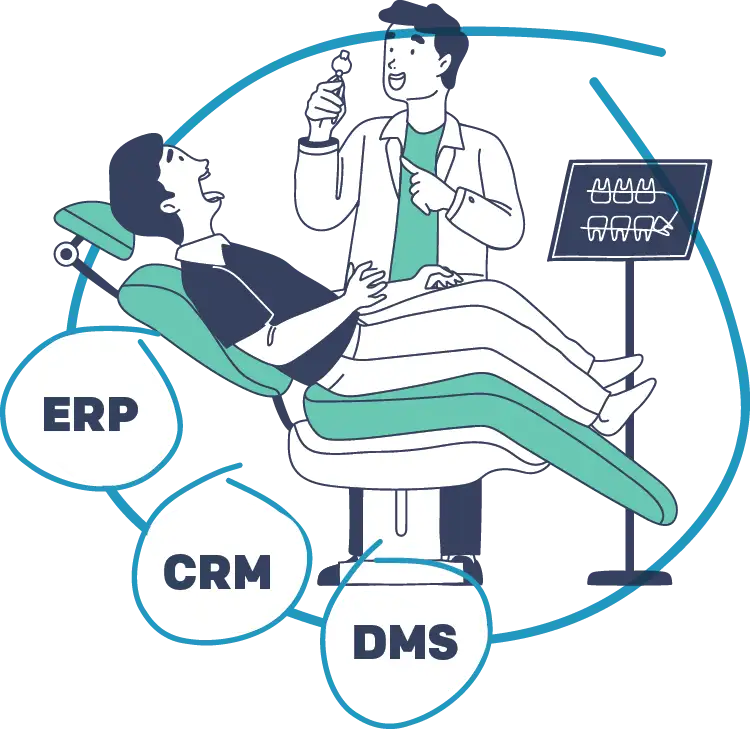Identifying the Problems
In order to solve the patient service expansion use case, it's important to understand why dental care organizations are struggling in the first place.
For the most part, the struggle comes down to data – and it's not a problem of scarcity.
Most clinics have an abundance of data siloed across DMSs, CRMs, and EPRs. The good news? This data is sufficient to creating unified patient profiles. The bad news? They don't have the means to consolidate it. According to the Journal of Public Health Dentistry, it's crucial for dental providers to integrate their data in order to improve care delivery. Unfortunately, many clinics aren't consolidating their data into unified patient profiles.
It's like having a dictionary. Sure, it contains every word you'd need to write a best-selling non-fiction novel. But unfortunately, it's not a novel until you organize the words it contains in logical way.
With a high-level roadmap for digital transformation and buy-in from stakeholders, there's a massive opportunity to shift from a reactive care model. It's not just about increasing lifetime patient values – that's just the impact. Proactive care not only has positive financial advantages, but it creates genuine interactions that patients value. Grasping the opportunity relies on a patient data strategy focusing on unifying disparate data.

The road to proactive care isn't easy though. As I mentioned, dental clinics are notorious for having inaccessible, siloed patient data spread across their tech stacks. It creates the following gaps:
- Gap 1: Siloed Data
Data is spread across disparate DMSs, CRMs, and ERPs that don't talk to one another.
- Gap 2: Fragmented Architecture
Because systems don't talk with each other, marketers aren't able to group patients.
- Gap 3: Inaccessible Datasets
Because markers are unable to create patient groups, they can't craft messaging for service expansion.
Solving the Use Case
We use Salesforce Marketing Cloud to unify patient data from ERPs, DMSs, and other marketing tools a dental clinic uses. Data unification creates a 360-degree patient profile, giving marketing teams the individual data they need to create defined populations based on medical records, website activity, claims info, and more. We typically recommend different types of populations, including categories that define intent and clinical realities. Intent categories summarize a patient's approach to care, whereas clinical categories summarize health.
Here are the intent categories we recommend:
- Event Driven Patients
- Reactive Patients
- Proactive Patients
Health categories are much broader and depend on the type of dental care you provide. Here are some examples we recommend:
- Oral Disease Patients
- Implant Patients
- Orthodontic Patients
- Endodontics Patients
- Periodontics Patients
- Maxillofacial Patients
- Pediatric Patients
- Pediatric Patients (and their parents)
- Cosmetic Patients
With intent and clinical populations in place, marketing teams can focus on creating personalized journeys that focus on relevant care plans for each patient. Engagement can take place across multiple channels, including email, SMS, and location-based advertising. It all comes down to the patient's preferences.
These journeys are fine-tuned improve patient experiences, keeping your dental practice's brand top of mind. In addition to positive health impacts on the community, Salesforce Marketing Cloud drives patient decisions that create service expansion based on real needs.
![]()


